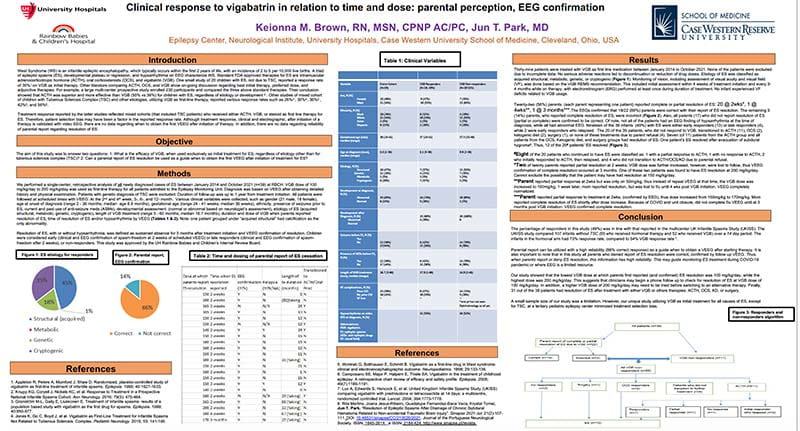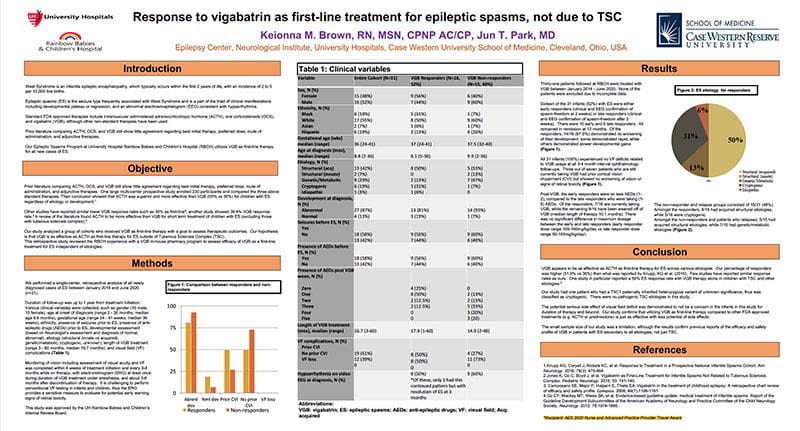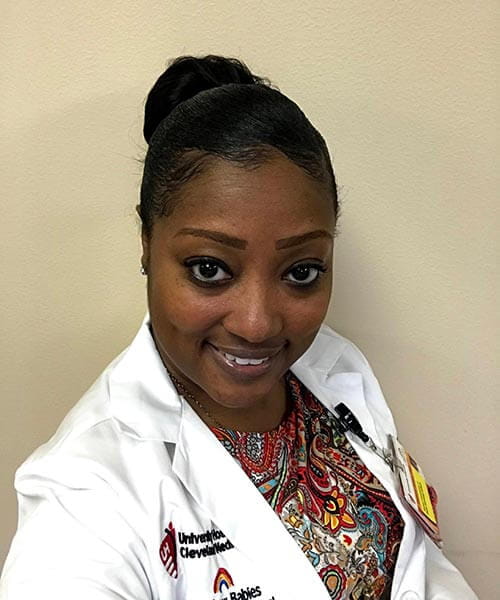Pediatric Epilepsy Study
Clinical response to vigabatrin in relation to time and dose: parental perception, EEG confirmation
West Syndrome (WS) is an infantile epileptic encephalopathy, which typically occurs within the first 2 years of life, with an incidence of 2 to 5 per 10,000 live births. A triad of epileptic spasms (ES), developmental plateau or regression, and hypsarrhythmia on EEG characterize WS. Standard FDA approved therapies for ES are intramuscular adrenocorticotropic hormone (ACTH), oral corticosteroids (OCS), and vigabatrin (VGB). One small study of 20 children with ES, not due to TSC, reported a response rate of 35%1 on VGB as initial therapy. Other literature comparing ACTH, OCS, and VGB show on-going discussion regarding best initial therapy, preferred dose, and adjunctive therapies. For example, a large multi-center prospective study enrolled 230 participants and compared the three above standard therapies. Their conclusion showed that ACTH was superior and more effective than VGB (55% vs 36%) for children with ES, regardless of etiology or development 2 . Other studies of mixed cohort of children with Tuberous Sclerosis Complex (TSC) and other etiologies, utilizing VGB as first-line therapy, reported various response rates such as 26%3 , 30%4 , 36%2 , 42%5, and 56%6.
Treatment response reported by the latter studies reflected mixed cohorts (that included TSC patients) who received either ACTH, VGB, or steroid as first line therapy for ES. Therefore, patient selection bias may have been a factor in the reported response rate. Although treatment response, clinical and electrographic, after initiation of a therapy is validated with video EEG, there are no data regarding when to obtain the first VEEG after initiation of therapy. In addition, there are no data regarding reliability of parental report regarding resolution of ES.

ACNS 2021-2022 Poster

AES 2020 Poster
About Keionna Brown
 I always knew that I wanted to have a career working with and taking of children. As a child myself, I loved babysitting and watching over the younger children in my family. It was always fascinated watching the younger children in my family grow and develop. During my babysitting adventures, I remember always making sure the child had a well-balanced meal and getting down to their level to play with them. Play for children is much more than just play; it’s how they interact with their environment, learn cause/effect, develop language, develop problem-solving skills, learn turn-taking, and many other life lessons.
I always knew that I wanted to have a career working with and taking of children. As a child myself, I loved babysitting and watching over the younger children in my family. It was always fascinated watching the younger children in my family grow and develop. During my babysitting adventures, I remember always making sure the child had a well-balanced meal and getting down to their level to play with them. Play for children is much more than just play; it’s how they interact with their environment, learn cause/effect, develop language, develop problem-solving skills, learn turn-taking, and many other life lessons.
Fast forward to college, where I attended the Ohio State University with a major in Biology and Pre Med. As I began my coursework in the sciences, I quickly learned that even though I wanted to be in the field of medicine, I did not want to take the medical school route. I began soul searching and remembering how much I enjoy nurturing and taking care of children. It was at that moment that my quest for nursing school began. As a nursing student at the beginning of my 3rd year of undergrad, I continued to babysit and started a job as a Patient Care Assistant as my schedule permitted.
After graduation from nursing school, I accepted my first RN position in the Neonatal Intensive Care Unit (NICU) at Nationwide Children’s Hospital. My mother’s personal experience as a premature baby is what piqued my interest in caring for babies in the NICU. I had so many wonderful mentors and learned a lot in my time as a NICU RN. I moved to Chicago shortly afterward to begin my graduate coursework on my journey to become an advanced practice registered nurse.
I am a Pediatric Nurse Practitioner in the Pediatric Epilepsy Monitoring Unit (PEMU) at UH Rainbow Babies and Children’s Hospital. I recently celebrated ten years and am very fortunate to have been given this opportunity to care for children and collaborate with so many wonderful and talented individuals.
I am privileged to help patients and their families along their journey of living with a diagnosis of epilepsy. In the specialty of epilepsy, we see a broad spectrum from mild to more severe intractable cases. When children receive a diagnosis of epilepsy, there are often many questions from the parents and the child themselves (dependent on age and developmental level). My colleagues and I always focus on the fact that the diagnosis does not define the child. Our goal on this journey with them is to educate, support, and help to improve seizures so that the child has the most optimal quality of life, continues to enjoy childhood, and reaches their fullest potential.
What I find most rewarding about my work is being able to be a continuity for patients and their families. Although I work inpatient, I have a close relationship and rapport with our outpatient nurses. As a result, I often get updates on how patients are doing. In addition, I love seeing patients return for subsequent visits for EEG so that I can continue to build rapport with patients and families and continue to show support and encouragement along the way. I find so much satisfaction when the treatment is effective at resolving seizures. However, this is not the case for all children with epilepsy. One-third of epilepsies can be refractory to treatment. I find that being honest and helping the family understand that mutually we will continue to work diligently to devise a new management plan typically helps build trust.
One of my research interests is infants with a specific epilepsy type called West Syndrome or infantile spasms. This type is a very catastrophic type of epilepsy. If treatment is not immediately and effectively initiated with one of two FDA-approved medications, it can result in suboptimal outcomes in growth and development. My role is to help with educating parents about the treatment, administration, and side effects. In addition, I have collaborated with a colleague (Dr. Jun Park) to present research posters at several conferences, including the American Epilepsy Society and the American Clinical Neurophysiology Society.


